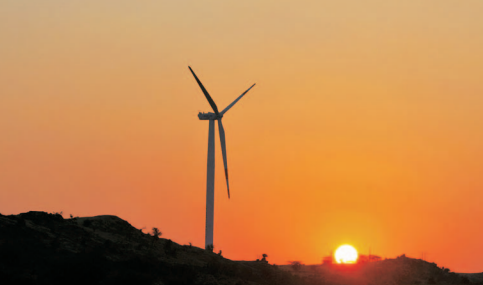
Mytrah Energy shows where there's a wind there's a way to value creation
By the end of 2015 it will be generating 750 megawatts and expects to double that capacity shortly afterward.
Not bad for a firm that started life on the public markets just four years ago.
However this ignores the fact the group’s chief executive Ravi Kailas and his team spent four years before that doing their due diligence on the Indian power market and the potential for wind.
“The biggest single thing in this is doing your homework and really knowing your stuff” says the Mytrah boss.
“This wasn’t a five minutes 'let’s go and try this'. There were four years of hard work [before the company was listed].”
It is worth noting the progress to date has been achieved without subsidy or tax breaks to aid its development.
It means the business model and returns are not being artificially supported by the state as they might in Europe or the US.
As a result the company won’t suffer from the sudden and often arbitrary changes to the regulatory framework that commonly affect investment in green projects in the West.
“We are not replacing some other form of power such as gas coal or nuclear and yet most analysts and investors look at India and still ask: where is the subsidy” said Kailas.
“This [lack of subsidy] is fundamental when you are building a business of scale although it may be okay if you are taking a marginal position.
“India and China are places where there is no historic legacy of having to automatically use traditional thermal power.
“The cost of wind is lower and where coal takes five years to execute wind might take one year. The decisions we are making are very different from those in Europe.”
So where it might cost a traditional power station 5-6 rupees to produce a unit of electricity wind comes in at 4.50-5.00 rupees the Mytrah chief executive says.
At the same time wind is unaffected by the changing price of coal and transportation.
“In wind we have no input cost – in fact there are very few costs once it [the turbine] is set up” said Kailas.
Mytrah’s strategy is all about doing things more cheaply than the traditional builders of power generation not just in India but globally.
For example where a traditional utility in Europe might spend US$10bn to get to five gigawatts capacity (US$2-4bn of that being equity) the company’s management expects to be able to achieve that sort of target at half of the capital cost.
That in turn means the contribution required from shareholders will be substantially lower. So far they have tipped in around US$80mln.
The timeline to getting wind turbines into operation numbers in months rather than the five years it might take to build and commission a coal-fired plant of any scale.
And Mytrah is able to build incrementally (one unit at a time) and spread its risk throughout the sub-continent a strategy that has also allowed it to maximise its wind and improve the predictability of its electricity production.
The roll-out to date has been largely funded by senior debt and mezzanine finance at an average annual cost of around 12.5%.
But if you realise the base rate in India is now 7.75% and on a downward trajectory then you will see there is a big opportunity when it comes to refinancing the debt.
“The equity value will double simply by reducing the interest rate by three percentage points on the assets that are complete” Kailas says.
“There are many opportunities to replace debt with other structures over a 20-year period to lower the cost of the debt. We could replace it with a bond and other yield instruments.”
Earnings before tax depreciation and amortisation (EBITDA) for the year just gone are expected to be US$65mln rising to US$92mln and then US$126mln in 2016. This means the group is on a fairly conservative net debt to EBITDA ratio and has headroom to grow further.
Kailas reckons Mytrah has the ability to expand at around 20% annually without having to actually increase its borrowing. Of course if it wants to grow more rapidly toward its 1500 megawatt aspiration it will have to increase its debts.
When the firm initially started out its operations were developed on a turnkey basis which meant its contractor bore most of the execution risk.
However over time Mytrah has begun developing sites itself which means it generates a higher rate of return from the most recent wind farms.
It is fair to say that judging from the current valuation of US$177mln investors in London don’t seem to have fully grasped Mytrah’s potential. Investec using some fairly conservative assumptions reckons it to be worth around US$310mln based on its current price target for the shares.
Perhaps this is the result of some misconceived notion about wind power or the Indian electricity market.
Kailas believes Mytrah has a good story based on sound long-term fundamentals and an under-supplied market.
“We are a utility and the baggage that goes with that word is that we operate in a very staid and steady business” he says.
“But we have made this into a growth company. Remember the words utility and growth company are never usually heard in the same sentence. But that’s exactly what’s happening.”

Legal Disclaimer:
MENAFN provides the
information “as is” without warranty of any kind. We do not accept
any responsibility or liability for the accuracy, content, images,
videos, licenses, completeness, legality, or reliability of the information
contained in this article. If you have any complaints or copyright
issues related to this article, kindly contact the provider above.


















Comments
No comment